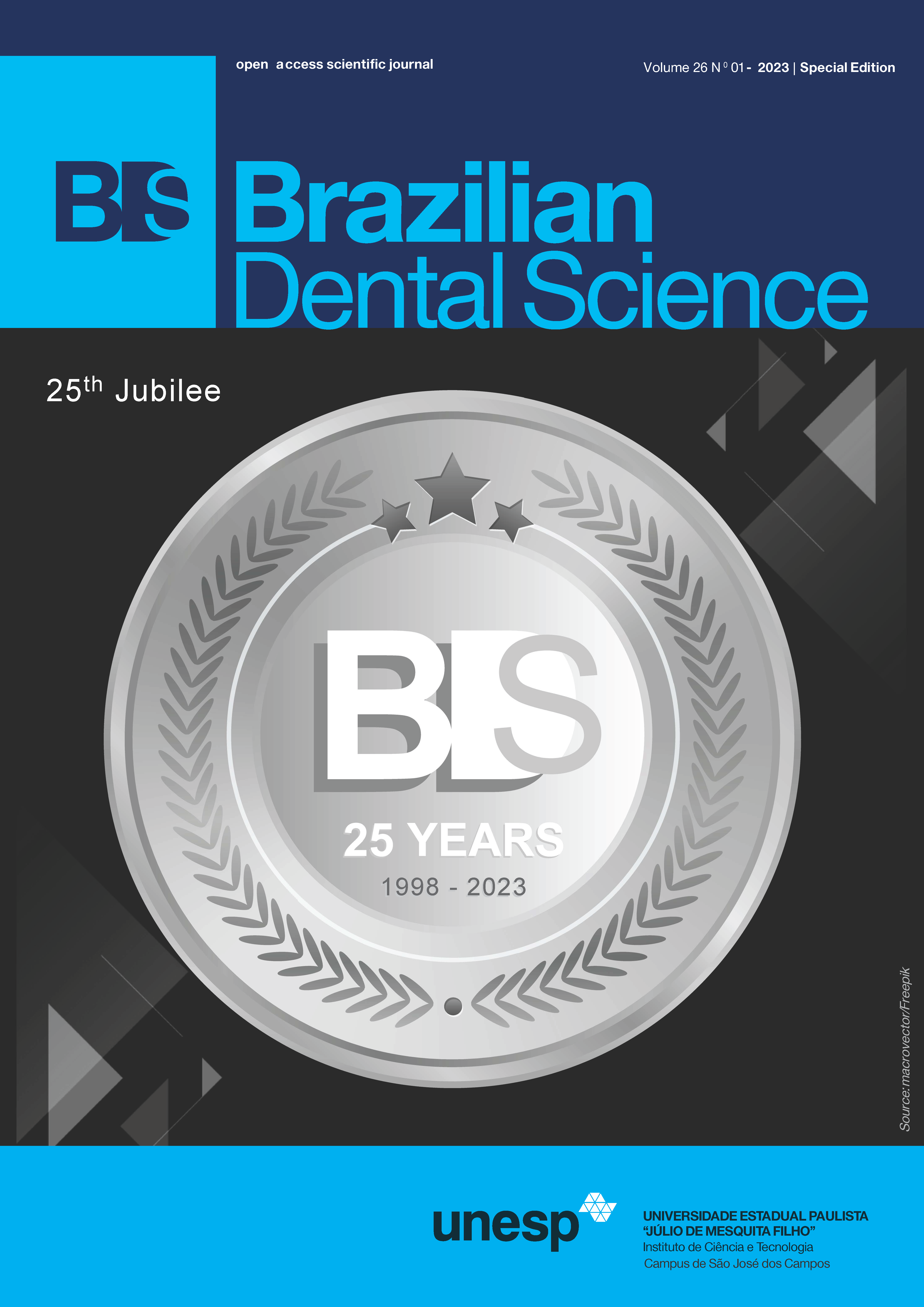Magnetic resonance imaging texture analysis of the temporomandibular joint for changes in the articular disc in individuals with migraine headache
DOI:
https://doi.org/10.4322/bds.2023.e3649Abstract
Objective: the aim of this study was to analyse the performance of the technique of texture analysis (TA) with magnetic resonance imaging (MRI) scans of temporomandibular joints (TMJs) as a tool for identification of possible changes in individuals with migraine headache (MH) by relating the findings to the presence of internal derangements. Material and Methods: thirty MRI scans of the TMJ were selected for study, of which 15 were from individuals without MH or any other type of headache (control group) and 15 from those diagnosed with migraine. T2-weighted MRI scans of the articular joints taken in closed-mouth position were used for TA. The co-occurrence matrix was used to calculate the texture parameters. Fisher’s exact test was used to compare the groups for gender, disc function and disc position, whereas Mann-Whitney’s test was used for other parameters. The relationship of TA with disc position and function was assessed by using logistic regression adjusted for side and group. Results: the results indicated that the MRI texture analysis of articular discs in individuals with migraine headache has the potential to determine the behaviour of disc derangements, in which high values of contrast, low values of entropy and their correlation can correspond to displacements and tendency for non-reduction of the disc in these individuals. Conclusion: the TA of articular discs in individuals with MH has the potential to determine the behaviour of disc derangements based on high values of contrast and low values of entropy
KEYWORDS
Texture Analysis; Migraine disorders; Temporomandibular disorders; Radiomics; Temporomandibular Joint Disc.
Downloads
Published
How to Cite
Issue
Section
License
Brazilian Dental Science uses the Creative Commons (CC-BY 4.0) license, thus preserving the integrity of articles in an open access environment. The journal allows the author to retain publishing rights without restrictions.
=================




























